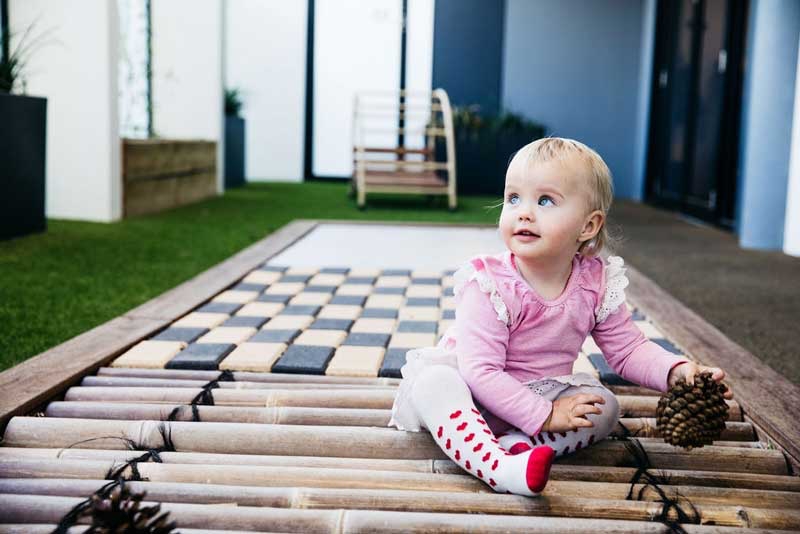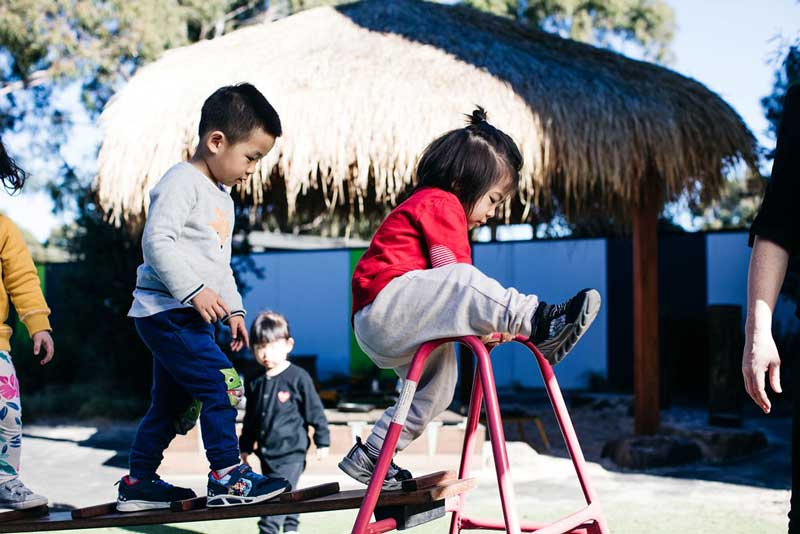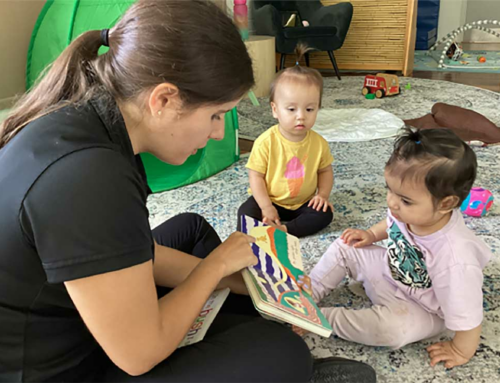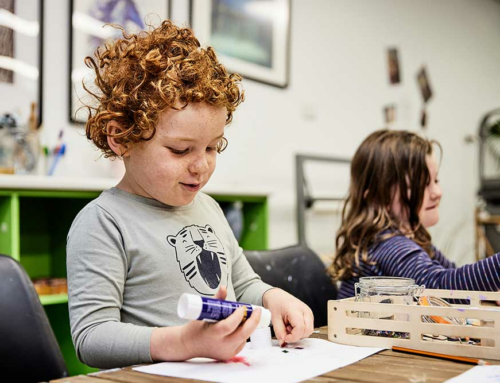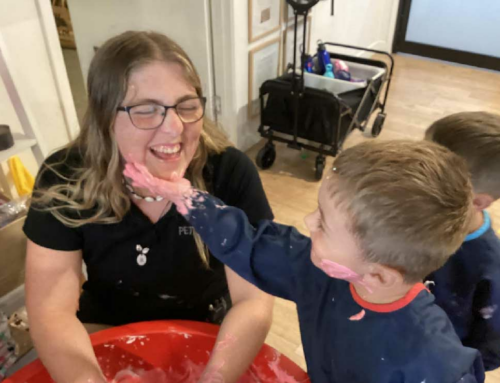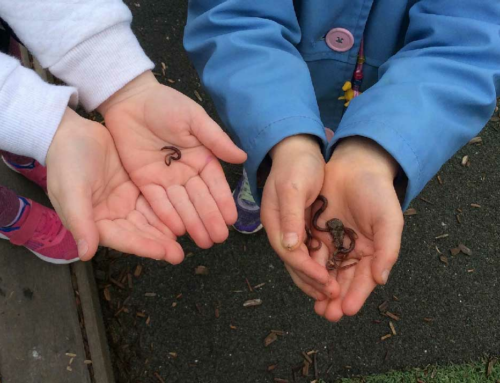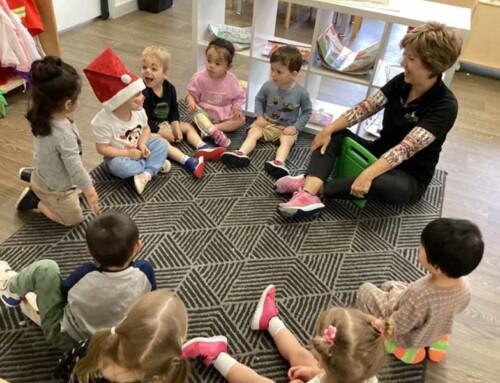Are you searching for play activities for babies and toddlers? Our movement and play ideas are fun-filled learning experiences for the home environment. Baby playtime is a time for family bonding and time for babies to grow stronger, active and confident.
There are many different kinds of play, including indoor and outdoor play, active play, singing play, water play, art and craft play and sensory play too. As your baby gets older, their experiences will grow as their motor skills strengthen, and their curiosity grows.
Your child will enjoy our range of movement and play activities for babies and toddlers. They will help to strengthen their motor skills, encourage your child’s development, and stir their imagination and curiosity.
While lack of sleep may make parenthood feel a bit like boot camp, introducing these playful experiences will help you and your baby thrive.
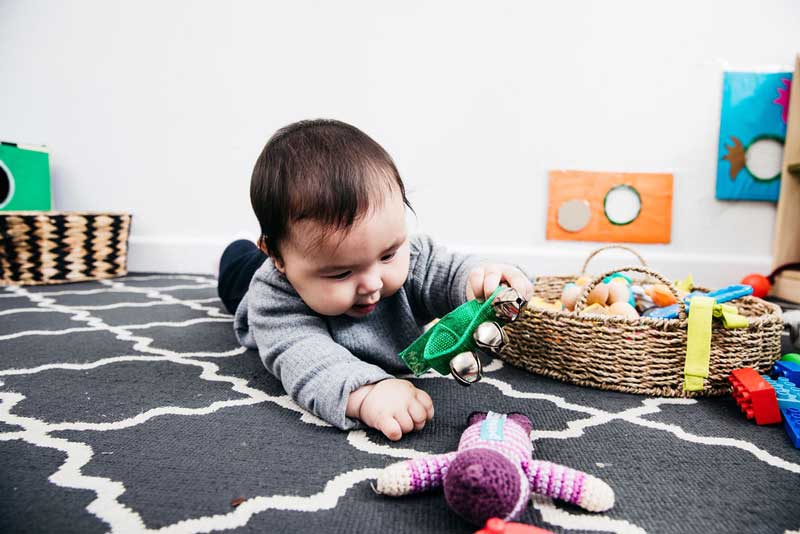
Playful activities for babies and toddlers
A newborn’s physical development is the most noticeable during their first few weeks. While they might seem like passive babies, they’re working hard to strengthen their muscles and regain their birth weight.
Every baby is different when it comes to development milestones, so don’t expect everything to be like clockwork. Premature babies also need time to catch up. If you’re worried that your child isn’t interested in these movement and play activities, talk to your GP or health professional.
1. Child-led vision play
A newborn’s vision matures quickly over the first few weeks of life. What are they looking at? Follow their eyes. Are they staring at you? Babies love to look at faces. As they develop, they’ll gain an interest in other things like contrasting colours and objects.
Talk to your child about what they’re staring at. If they’re looking at how light reflects off a surface, try playing with the light. If they’re eyeing an object, bring it nearer for a closer inspection. If they only have eyes for you, move from side to side and continue talking.
2. Tummy time activities for newborns
Include tummy time as part of your baby’s regular play routine throughout their first year. It’s a playful movement exercise where your baby spends time while they’re awake on their belly with their weight on their forearms.
Tummy time encourages babies to practice lifting and turning their head, pushing up with the arms and moving their legs. It helps babies to develop their motor skills and sensory development, including rolling and crawling.
Get down on the floor with your baby and let them know you’re there. Capture their gaze and talk to them. Changing sides will encourage them to move, lift and turn their head to see you. Placing a few safe objects in front them can also inspire their curiosity.
Begin tummy time with just a couple of minutes, 2-3 times a day and gradually build it up to 10-15 minute intervals. Always supervise tummy time and place your baby on their back when it’s time to sleep.
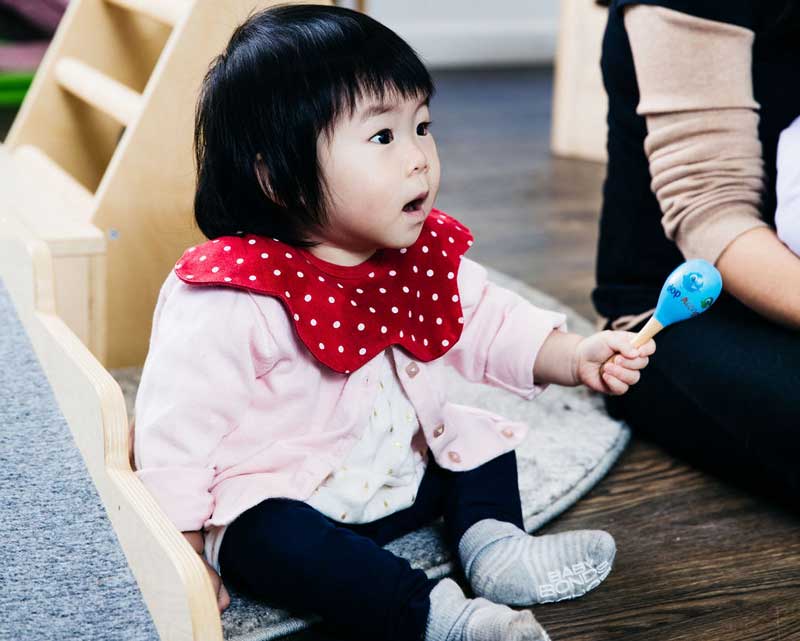
3. Singing nursery rhymes to encourage baby’s movement and play
Singing nursery rhymes to your baby has many benefits. By making actions as you sing, you encourage your child to wriggle, kick and swing their arms as they begin to imitate you. Singing activities for babies promote brain development and active play.
It also allows your baby to get to know your voice and bond. Families have been singing nursery rhymes and lullabies to their babies for hundreds of years. You can make up your own songs or sing some old-time family favourites.
Singing has other benefits too like helping with language development and regulating emotion with happy, soothing and sleepy songs.
Babies can hear their mother’s voice in utero and learn to recognise it more quickly after they’re born. Hearing their parent’s singing can help soothe the baby, or encourage them to look for their parent’s voice from across the room.
4. Shakers, rattles and “musical” pots
Activities for babies that provoke musical sounds have many benefits.
You can use rattles, shakers and or homemade musical objects like pots and pans with wooden spoons for young babies to hold on to. Grasping and manipulating these objects during playtime develops your baby’s motor skills.
While it may take time for their coordination to develop, this movement and play activity for babies also encourages experimentation and exploring with sound. It also helps to develop their listening skills.
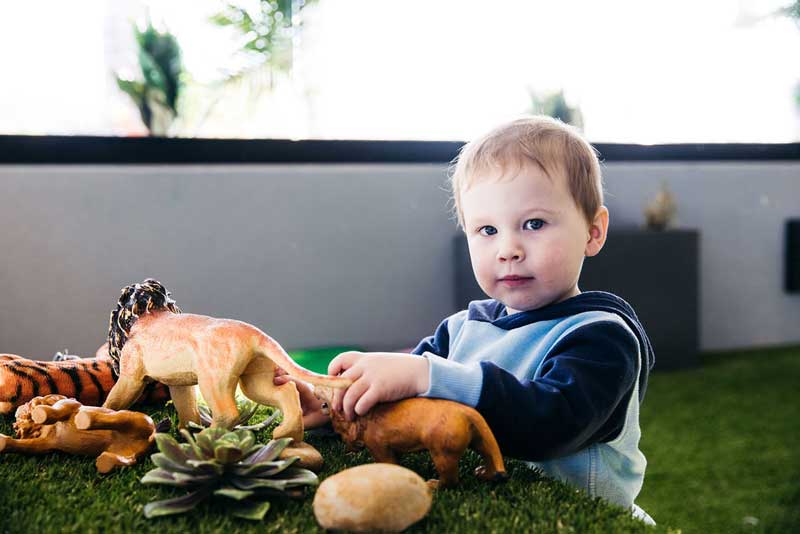
5. Discovery stations for baby playtime
Once your baby is on the move, you may want to engage their creativity and curiosity with discovery stations. These are short tables, secured shelves and boxes placed at various intervals around their play space.
Discovery stations encourage your child to move around and explore their play area. Each station can inspire an endless range of activities for babies. Different objects from loose parts to natural things provoke your child’s play, movement and learning.
Your child should be free to move from one station to another. Perhaps they’ll stop to play at one table but then move on to a box, take out an object and return to the original discovery station to include the new item in what they’re doing.
Discovery stations should contain objects that are age-appropriate but which also reflect your child’s interests. You can mix them up or categorise your stations into musical instruments, picture books, an assortment of natural things or sensory items.
6. Tunnel time activities for babies
Tunnels are fun and a creative way to encourage movement and play with your babies who are confident crawlers or toddlers. You can combine tunnels with child-led or discovery play and have a different play station at the end of each tunnel.
You can build tunnels out of boxes, chairs and tables. Some children’s play tents come with tunnel entrances. Ask your child if you can join in their play. Go on the crawl and when you reach the end, add pillows, books and loose parts to inspire more play ideas.
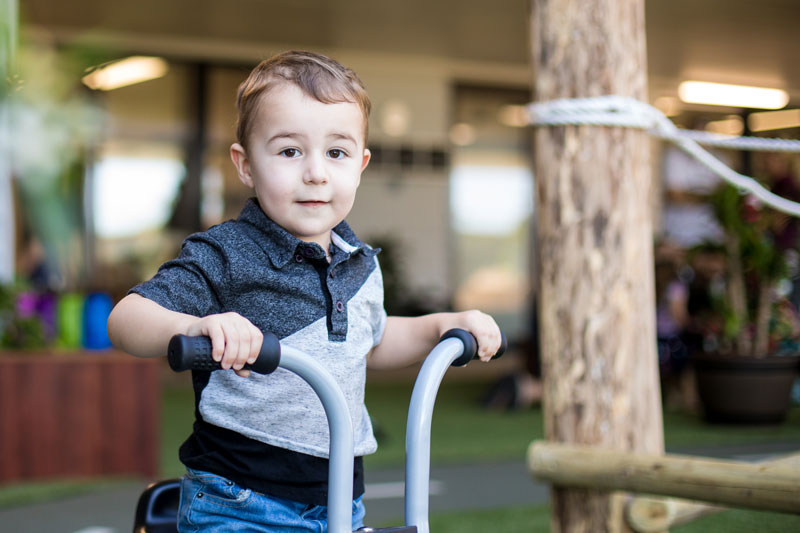
7. Ride-on toys as an active play activity
Ride-on toys are magical beasts that carry children from one adventure to another. They appeal to children from about the age of 12 months; when they’ve grown confident enough on their feet to be able to push themselves about.
As your older baby uses their leg muscles to move on their ride-on toy they will improve their balance and coordination. This activity will also develop your child’s self-confidence and independence.
Ride-on toys are often used in outdoor activities that combine imagination and role-play. As your child’s confidence, muscles and ability grow, you can upgrade it to include peddles and eventually support their activity on a two-wheeled bicycle.
More active movement and play activities suitable for older babies and toddlers include:
- Catching a ball.
- Walking the dog.
- Water play with a sprinkler or hose.
- Dancing.
- Skipping.
- Swimming
- Running about.
- Gardening.
- Hide and seek.
Movement and play activities for babies and toddlers are vital for encouraging children’s physical literacy. You can promote your child’s physical literacy by looking after our own and by provoking movement and play through healthy habits that begin at birth.
Be inspired with movement and play activities at Petit Early Learning Journey
Play is one of the most valuable experiences for children’s learning. At Petit ELJ, we believe that all children are active learners. Their engagement with people, places and things contributes to their development and knowledge.
Learning happens all day long at Petit ELJ. It’s integrated into our curriculum, rituals, rhythms and routines, and we place a strong emphasis on play-based learning.
To learn more about the different kinds of play that we encourage, or how we value movement and play activities, we invite you to visit your nearest centre.
